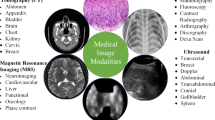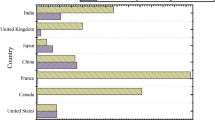Abstract
The patients with diabetes have a chance to develop diabetic retinopathy (DR) which affects to the eyes. DR can cause blindness if the patients do not control diabetes. The patients with DR will have an impairment of metabolism of glucose causing a high glucose level in blood vessel called hyperglycemia. It leads to abnormal blood vessel and ultimately results in leakage of blood or fluid like lipoproteins, which are deposited under macular edema called hard exudates. They are normally white or yellowish-white with margins. Hard exudates are often arranged in clumps or circinate rings and located in the outer layer of the retina. The aim of this research was to detect hard exudates by applying several image processing techniques and classify them by using supervised learning methods including support vector machines and some neural network approaches, i.e., multilayer perceptron (MLP) network, hierarchical adaptive neurofuzzy inference system (hierarchical ANFIS), and convolutional neuron networks. DIARETDB1 which contains 89 fundus images is exploited as a dataset for evaluation. Hard exudate candidates are extracted by morphological techniques and classified by the classifiers trained by extracted patches with the corresponding ground truths. The tenfold cross-validation is applied to assure the generalization of the results. The proposed method achieves the area under the curve (AUC) of 0.998 when the MLP network is applied. The AUCs for all four classifiers are more than 0.95. This shows that the combination of image processing techniques and suitable classifiers can perform very well in hard exudate detection problem.
























Similar content being viewed by others
References
Besenczi R, Tóth J, Hajdu A (2016) A review on automatic analysis techniques for color fundus photographs. Comput Struct Biotechnol J 14:371–384
Mookiah MRK, Acharya UR, Chua CK, Min Lim C, Ng EYK, Laude A (2013) Computer-aided diagnosis of diabetic retinopathy: a review. Comput Biol Med 43:2136–2155
Frazao LB, Theera-Umpon N, Auephanwiriyakul S (2019) Diagnosis of diabetic retinopathy based on holistic texture and local retinal features. Inf Sci 475:44–66
Pratt H, Coenen F, Broadbent DM, Harding SP, Zheng Y (2016) Convolutional neural networks for diabetic retinopathy. Procedia Comput Sci 90:200–205
Orlando JI, Prokofyeva E, del Fresno M, Blaschko MB (2018) An ensemble deep learning based approach for red lesion detection in fundus images. Comput Methods Programs Biomed 153:115–127
Dasgupta A, Singh S (2017) A fully convolutional neural network based structured prediction approach towards the retinal vessel segmentation. In: Proceedings—international symposium on biomedical imaging, pp 248–251
Yang Y, Li T, Li W, Wu H, Fan W, Zhang W (2017) Lesion detection and grading of diabetic retinopathy via two-stages deep convolutional neural networks. In: Descoteaux M, Maier-Hein L, Franz A, Jannin P, Collins D, Duchesne S (eds) Medical image computing and computer assisted intervention—MICCAI 2017. Lecture notes in computer science (LNCS), vol 10435, pp 533–540. Springer, Cham
Gondal WM, Kohler JM, Grzeszick R, Fink GA, Hirsch M (2018) Weakly-supervised localization of diabetic retinopathy lesions in retinal fundus images. In: Proceedings—international conference on image processing ICIP, vol 2017–September, pp 2069–2073
Mendonça AM, Sousa A, Mendonça L, Campilho A (2013) Automatic localization of the optic disc by combining vascular and intensity information. Comput Med Imaging Graph 37(5–6):409–417
Welfer D, Scharcanski J, Kitamura CM, Dal Pizzol MM, Ludwig LWB, Marinho DR (2010) Segmentation of the optic disk in color eye fundus images using an adaptive morphological approach. Comput Biol Med 40(2):124–137
Haloi M, Dandapat S, Sinha R (2016) An Unsupervised method for detection and validation of the optic disc and the fovea. arXiv:1601.06608, pp 1–8
Novo J, Penedo MG, Santos J (2009) Localisation of the optic disc by means of GA-optimised Topological Active Nets. Image Vis Comput 27(10):1572–1584
Ranamuka NG, Meegama RGN (2013) Detection of hard exudates from diabetic retinopathy images using fuzzy logic. IET Image Process 7(2):121–130
Rajput GG, Patil PN (2014) Detection and classification of exudates using k-means clustering in color retinal images. In: Proceedings—2014 5th international conference on signal and image processing. ICSIP 2014, pp 126–130
Ramasubramanian B, Arunmani G, Ravivarma P, Rajasekar E (2015) A novel approach for automated detection of exudates using retinal image processing. In: 2015 International conference on communications, signal processing. ICCSP 2015, pp 139–143
Yu S, Xiao D, Kanagasingam Y (2017) Exudate detection for diabetic retinopathy with convolutional neural networks. In: Proceedings of the annual international conference of the IEEE engineering in medicine and biology society. EMBS, pp 1744–1747
Giancardo L, Meriaudeau F, Karnowski TP, Li Y, Garg S, Tobin KW Jr, Chaum E (2012) Exudate-based diabetic macular edema detection in fundus images using publicly available datasets. Med Image Anal 16(1):216–226
Zhang X, Thibault G, Decencière E, Marcotegui B, Laÿ B, Danno R, Cazuguel G, Quellec G, Lamard M, Massin P, Chabouis A, Victor Z, Erginay A (2014) Exudate detection in color retinal images for mass screening of diabetic retinopathy. Med Image Anal 18:1026–1043
Fraz MM, Jahangir W, Zahid S, Hamayun MM, Barman SA (2017) Multiscale segmentation of exudates in retinal images using contextual cues and ensemble classification. Biomed Signal Process Control 35:50–62
Dougherty G (2009) Digital image processing for medical applications. Cambridge Univesity Press, Cambridge
Kauppi T, Kalesnykiene V, Kamarainen J-K, Lensu L, Sorri I, Pietila J, Kalviainen H, Uusitalo H (2007) DIARETDB1-standard diabetic retino-pathy database. In: IMAGERET—optimal detection and decision-support diagnosis of diabetic retinopathy, pp 15.1–15.10
Liu T, Fang S, Zhao Y, Wang P, Zhang J (2015) Implementation of training convolutional neural networks. arXiv:1506.01195, pp 1–10
Acknowledgements
The authors would like to thank the anonymous reviewers very much for their valuable comments leading to an improvement of this work.
Author information
Authors and Affiliations
Corresponding author
Ethics declarations
Conflict of interest
The authors declare that they have no conflict of interest.
Additional information
Publisher's Note
Springer Nature remains neutral with regard to jurisdictional claims in published maps and institutional affiliations.
Rights and permissions
About this article
Cite this article
Theera-Umpon, N., Poonkasem, I., Auephanwiriyakul, S. et al. Hard exudate detection in retinal fundus images using supervised learning. Neural Comput & Applic 32, 13079–13096 (2020). https://doi.org/10.1007/s00521-019-04402-7
Received:
Accepted:
Published:
Issue Date:
DOI: https://doi.org/10.1007/s00521-019-04402-7




